Let’s delve into the fascinating world of telescopes and explore the key concepts and characteristics that define these remarkable devices. Armed with this knowledge, you’ll be well-equipped to have an informed conversation with a consultant when shopping for a telescope.
Understanding the Components of a Telescope
Telescope Tube: A Closer Look
The telescope tube is the primary structural element of a telescope and houses the lens that captures incoming light. There are three main types of lenses used in telescopes: refractors, reflectors, and catadioptric telescopes. Each type has its own unique advantages and disadvantages, which we will discuss in more detail below.
Finder
Finder – a compact telescope tube, aligned with the main tube, typically providing a magnification of approximately 6-10 times. It is utilized for initial alignment with an object.
Ocular
Ocular – is an interchangeable component of the telescope that is used for viewing. The longer the focal length of the ocular, the lower the magnification, but the wider the field of view. Therefore, it is advantageous to have several different ones.
In recent times, there has been an increase in the availability of wide-angle oculars with a broader field of view. I highly recommend considering them – thanks to a wider perspective WITH THE SAME MAGNIFICATION, it becomes easier to locate objects, and the sense of immersion into the depths of space is much more pronounced.
There are eyepieces available that feature a soft rubber ring around them, known as a “skirt”. This small detail serves multiple purposes and proves to be quite useful.
Firstly, the skirt acts as a safeguard, preventing any accidental contact between your eye and the eyepiece glass. Such contact can have unpleasant consequences for both your eyesight and the quality of the optics.
Secondly, the rubber skirt effectively shields your eye from any side glare caused by light. This feature comes in handy more often than you might think, especially when observing from a balcony or any other location with varying light conditions.
The key parameter of an eyepiece is its focal length, denoted as f. A smaller focal length translates to a higher magnification power provided by the eyepiece.
Eyepieces can be purchased individually or in sets.
There is a wealth of expert advice available on selecting the right eyepieces based on the type of object you are observing. While these tips are valuable, beginners in amateur astronomy may not find the finer details as crucial, especially if they lack experience.
For instance, it may require considerable effort to notice the distinction between eyepieces with a 9mm and 10mm focal length in the same telescope. While there is indeed a difference, trust me: it will quickly fade from memory as you switch from one eyepiece to another.
However, one eyepiece that is essential to have is the one that offers “equal magnification” for your specific telescope model. This type of eyepiece provides a modest magnification but with optimal brightness. Typically, this eyepiece is included in the telescope set by the manufacturer – usually, it is the eyepiece with the longest focal length among the ones included with your telescope.
When it comes to everything else, it is easier to choose the right eyepiece for a specific celestial object.
Thus, purchasing a set of eyepieces is a logical decision – typically, it offers a more cost-effective option and enables one to swiftly acquire expertise and assess the necessity of acquiring high-quality individual eyepieces.
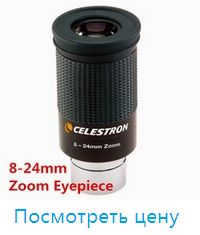

There are eyepieces available with an adjustable focus, allowing for smooth changes to the image, both increasing and decreasing its size. While eyepieces with a fixed focus tend to offer better image quality, eyepieces with adjustable focus are incredibly convenient for quickly showing guests something in the sky without the hassle of constantly changing eyepieces. They are also useful for those who have limited time for observations and simply want to take a quick look at the sky.
Furthermore, these eyepieces greatly simplify the search for objects, as they not only change the magnification but also the angle of view, which affects the visible diameter of the sky. As a result, the need for a standard telescope finder is significantly reduced.
Telescope Mount
A telescope mount, typically placed on a tripod, consists of two rotating axes. There are two main types of mounts available: the azimuthal mount and the higher-priced equatorial mount. The Dobson mount is a modified version of the azimuth mount, functioning as a turntable without the need for a tripod.
It’s worth mentioning the various “attachments” that can be added to the telescope as well.
Filters for Light
Filters for light serve various purposes and are not necessary in the early stages of studying astronomy.
However, if you purchase a telescope with a large aperture and plan to observe the Moon, it is advisable to use a lunar filter that reduces the brightness of the image, ensuring eye safety without altering the image’s color.
There are filters available that can be quite expensive, designed to reduce the illumination from streetlights in the sky by blocking certain wavelengths. This functionality can be quite beneficial since the sky illumination caused by streetlights can be highly disruptive, although it may not accurately represent the true image. However, not everyone can perceive this distinction. In any case, it is preferable to perceive the object with some alteration rather than not perceiving it at all.
Due to this excessive illumination, a significant number of urban dwellers have never had the opportunity to observe the Milky Way, let alone nebulae and galaxies.
The Moon & SkyGlow filter, available for approximately 400 rubles, is designed to eliminate a significant portion of the spectrum emitted by mercury and sodium streetlights. While it may not be as expensive as high-end anti-phonar filters that cost several thousand rubles, it still offers great value for the money.
Barlow lens
The Barlow lens is a convenient tool for increasing the magnification of a telescope without having to change the telescope itself. While it does reduce the brightness of the image and may introduce some distortions, these drawbacks are often desirable when observing the Moon, as it is intentionally darkened with special filters. Additionally, beginners in amateur astronomy may not even notice the distortions caused by the additional lenses, as it becomes easier to distinguish with experience.
Meanwhile, a budget-friendly Barlow lens with multilayer luminescence is available for only about 700-900 rubles – a small amount to invest in determining what’s what.
You can find additional information about Barlow lenses here.
Diagonal mirrors
Diagonal mirrors positioned in front of the eyepiece can be quite advantageous, particularly for refractor telescopes and catadioptrics. Without a diagonal mirror, observing objects at the zenith would require the “lying on your back” position 🙂
Diagonal mirrors come in two types: those that deflect the rays by 45 degrees or 90 degrees.
In reflectors, diagonal mirrors are typically not necessary due to their design, but for other types of telescopes, they are essential.
There are various types of diagonal telescope mirrors available – ones with plastic casings, ones with metal casings, some more expensive than others. While there may be slight differences between them, it is advisable for beginners in astronomy to opt for a reasonably priced mirror, such as the ones provided in the links on the right. These mirrors were quite affordable at the time of this post and even included free shipping to Russia – a small but pleasant bonus.
Once again, I am not a fan of sacrificing image quality for convenience. However, using diagonal mirrors in refractor telescopes and catadioptrics makes observing much more comfortable – it reduces strain on the neck and adds to the overall enjoyment 🙂
Binocular attachment for a telescope
The binocular attachment for a telescope is an incredibly useful tool. It provides a much more convenient way to view objects by using both eyes instead of straining with just one. This allows for a more immersive and “three-dimensional” experience.
The binocular attachment works by splitting a single light stream into two separate beams, one for each eye. As a result, the brightness of the image seen in each eye is halved. However, this tradeoff is worth it for the enhanced depth perception and overall more complete visual experience it provides.
Furthermore, the binocular attachment itself may cause a slight decrease in brightness.
Hence, it is practical to utilize binocular telescope attachments in two scenarios:
1) when observing the Moon, as its image still requires shading when observed through a telescope;
2) when employing significantly large telescopes, measuring 300-350mm and above.
When I used the binocular attachment with my 250mm reflector telescope, which is a Dobson, I noticed that each eye received the same brightness as if it were using a 176mm mirror. This calculation doesn’t even take into account any losses that may occur with the binocular attachment.
Without the attachment, it can be challenging to observe the Moon with such a powerful telescope because the image is too bright. However, with the attachment, it becomes much more comfortable to observe with any of my eyepieces (ranging from 6-32mm) at various magnifications.
- Reflector – an optical instrument that utilizes a mirror for the purpose of gathering light.
Related concepts
Refractor – an optical device that makes use of a system of lenses, known as a lens, in order to capture light. The functioning of such devices is based on the phenomenon of refraction.
Telescope (derived from the Greek words τῆλε meaning “far away” and σκοπέω meaning “looking”) – a tool that enables the observation of distant objects by collecting electromagnetic radiation, such as visible light.
Astrograph (derived from the Greek words ἄστρον meaning “luminary” and γράφω meaning “writing”) – a telescope designed for the purpose of photographing celestial objects.
Aperture, derived from the Latin word “apertura,” refers to a crucial feature of an optical device that determines its ability to gather light and prevent diffraction blurring of image details. This characteristic can be expressed as either a linear or angular measurement, depending on the optical system in question. Typically, the aperture diaphragm, which serves as the primary means of limiting the diameter of light beams passing through the device, is highlighted among the various components of an optical instrument. It is worth noting that this diaphragm plays a significant role in.
Astrophotography, also known as astrography or astronomical photography, is a technique used to capture images of celestial bodies using specialized instruments known as astrographs. These instruments enable astronomers to photograph and document various astronomical phenomena. For more information, refer to the photographic method.
Mentions in literature
W. Herschel’s initial optical marvel was the “Great 20-foot” reflector, which was finished in 1783. This reflector consisted of a main concave mirror that was 18 inches (46 cm) in diameter and a tube that measured 20 feet (6.1 m) in length. Originally, the telescope was designed as a Newtonian reflector with a small flat mirror that reflected the image to an eyepiece located on the side. However, Herschel was dissatisfied with the amount of light lost during the reflection. In order to address this issue, he decided to remove the flat mirror and instead mount the eyepiece directly at the focus of the telescope on the top edge of the tube. He also made observations from a movable platform, positioning himself so that he could look through the eyepiece downwards towards the main mirror at the base of the telescope.
The thrust of a jet engine is directly proportional to the mass of matter expelled from it per unit of time multiplied by the velocity at which it is expelled from the engine. Thus, the substance was expelled from the nozzle of the starship at the maximum possible speed – the speed of light itself. This substance was none other than light. The danger of photon engines lay in the fact that the light beam reflected by the mirror reflector had the potential to burn through any object it came into contact with, similar to Engineer Garin’s hyperboloid. This posed a serious threat to anything located behind the starship, resulting in photon-powered starships being used cautiously near inhabited planets. It was believed that after 150 years, due to focusing errors and natural scattering, the column of light emitted from the nozzle of a photon jet engine would no longer pose a threat to life, other starships, or planets. However, despite the advanced nature of these starships, they were primarily used for flights within planetary systems and for traveling to the nearest stars, typically within a distance of five light-years. For longer distances, a much more energetically expensive method of instantaneous transportation was utilized.
However, the size of the filament isn’t the sole reason why a flashlight creates penumbra shadows. Various factors, such as the reflector positioned behind the bulb, the glass cap of the flashlight, different seams, and defects, contribute to different effects on the light. Consequently, we anticipate a complex interplay between light and shadow due to the inherent complexity of the flashlight itself. Nevertheless, our experiments don’t focus on the random characteristics of flashlights. The underlying question about flashlight light delves into a more fundamental inquiry regarding light in its entirety: is there a theoretical limit to the sharpness of a shadow, or, in other words, how narrow a penumbra can be? For instance, can we indefinitely narrow the penumbra by constructing a flashlight from entirely black (non-reflective) material and utilizing increasingly smaller filaments?
Purchase a 260 watt electric lamp with a bright reflector. Position the lamp 1 meter away from your face. When engaging in solarization exercises, use the lamp as a substitute for the sun. However, keep in mind that no lamp can fully replace the therapeutic effects of sunlight.
Related concepts (continuation)
Adaptive optics is a branch of physical optics that focuses on techniques for correcting irregular distortions caused by the transmission of light through a non-uniform medium using controlled optical elements. The primary goals of adaptive optics include enhancing the resolution limits of observation devices, directing optical radiation towards a receiver or target, and more.
A spectrograph, which derives its name from the combination of “spectrum” and the Greek word “γραφω” meaning “write,” is a specialized device designed to record the entire electromagnetic spectrum simultaneously. This innovative instrument utilizes various radiation receivers, such as photomaterials, multi-element photodetectors (such as CCD matrices or rulers), and electron-optical converters. The dispersing system, responsible for separating the radiation flux based on wavelength, can consist of a prism, diffraction grating, or similar components. Additionally, the Samuel Oschin telescope, named in honor of Samuel Oschin, is a Schmidt telescope with a diameter of 122 centimeters (48 inches) situated at the Palomar Observatory.
A radio telescope is a device used to receive radio waves emitted by celestial objects in the Solar System, Galaxy, and Metagalaxy. It is used to study various characteristics of these objects, such as their coordinates, spatial structure, intensity, spectrum, and polarization.
An optical telescope, on the other hand, is designed to collect and focus electromagnetic radiation in the optical range. Its primary function is to enhance the brightness and apparent size of celestial objects, allowing for a better understanding of their details and characteristics. This is achieved through optical penetration, which increases the amount of light received, and resolving power, which enables the observation of fine details. The magnified image of the observed object can be observed directly with the eye or captured through photography. The performance of an optical telescope is determined by various parameters.
Photometer is a device used to measure various photometric quantities, primarily light quantities.
The spectroscope (also known as a spectrometer or spectrograph) is an optical instrument designed for visual observation of the radiation spectrum. It is commonly used for quick qualitative spectral analysis of substances in fields such as chemistry and metallurgy (e.g. styloscope). The process of separating radiation into its spectrum is achieved, for instance, by utilizing an optical prism. The ultraviolet spectrum can be observed visually using a fluorescent eyepiece, while the near-infrared region can be observed using an electron-optical converter.
Photometry, which comes from the Greek words for “light” and “I measure,” is a scientific field that is used in various areas of applied optics. It involves quantitative measurements of the energy characteristics of the radiation field.
A solar telescope is a specialized telescope that is designed specifically for observing the Sun. These telescopes typically focus on wavelengths near the visible part of the spectrum. Other names for solar telescopes include heliograph and photoheliograph.
Mirror-lens optical systems, also known as catadioptric systems, are a type of optical system that incorporates both spherical mirrors (catoptrics) and lenses as optical elements. These systems have been used in a wide range of applications, including searchlights, headlamps, early lighthouses, microscopes, and telescopes. They have also been utilized in the development of telephoto and superlens lenses.
The Canada-France-Hawaii Telescope, also known as CFHT, is an observatory situated on top of the Mauna Kea volcano in Hawaii, USA. It stands at an elevation of 4204 meters above sea level and is a significant component of the Mauna Kea Observatory.
On the other hand, the Large Binocular Telescope (LBT) is an exceptionally advanced and high-resolution optical telescope positioned on Mount Graham in Arizona, USA. Standing at a height of 3.3 km, it is considered one of the most technologically sophisticated telescopes in the world. The LBT is an integral part of the Mount Graham International Observatory.
A meridian circle is a tool used in astrometry to determine the equatorial coordinates of celestial bodies. It is similar to a transit instrument but has an extra divided circle for precise angle measurements in the meridian plane. This divided circle, usually consisting of two circles, is mounted horizontally on either side of the tube. Microscopes with special drums are used to read the circles.
Resolution refers to the capability of an optical instrument to accurately reproduce the image of objects that are close together.
Interferometer is a measuring device that utilizes the phenomenon of interference. The operational principle of an interferometer involves dividing a beam of electromagnetic radiation (such as light or radio waves) into two or more coherent beams using a device. Each of these beams follows a different optical path and is directed towards a screen, creating an interference pattern that allows for the determination of the phase difference between the interfering beams.
On the other hand, an astronomical satellite is a spacecraft specifically designed for making astronomical observations from space. The need for such observatories arose due to the Earth’s atmosphere trapping various forms of radiation from space objects, including gamma rays, x-rays, ultraviolet radiation, and most infrared radiation.
The spectrometer is an optical device that is used in spectroscopic research to capture and measure the spectrum. It is capable of quantitatively processing the spectrum and analyzing it using various analytical methods. The spectrum being analyzed is obtained by recording the fluorescence emitted after the substance under investigation is exposed to certain types of radiation, such as X-rays or laser radiation. This device is typically used for scientific purposes.
Astronomical instruments are tools that are used in the observation and study of celestial objects. Throughout history, various instruments have been developed for this purpose, starting with gnomons and progressing to astrolabes, quadrants, and sextants. In the 17th century, the first optical telescopes were invented, followed by radio telescopes, X-ray telescopes, neutrino telescopes, and gravitational telescopes in the 20th century.
The equatorial mount, also known as the parallactic mount, is a device designed to securely mount a telescope or any other astronomical instrument. It allows one of the axes of the instrument to be aligned parallel to the Earth’s axis and perpendicular to the celestial equator.
Astronomical observatories are dedicated facilities used for observing and studying celestial phenomena.
Speckle interferometry is a spatial interferometry method that involves analyzing the grain structure of an object’s image. This technique was first proposed by Antoine Labeyrie in 1970.
The Hale telescope is a massive 5-meter (200-inch) optical reflector telescope. It held the title of the world’s largest telescope from its construction in 1948 until 1976 when it was surpassed by the 6-meter Soviet BTA telescope. The Hale telescope is located at the Palomar Observatory in California, USA, and was named in honor of the renowned astronomer George Hale. Its construction was made possible with funding from the Rockefeller Foundation.
CCD, also known as charge-coupled device, is a broad term used to describe a group of semiconductor devices that utilize controlled charge transfer technology within the semiconductor material.
Astronomical binoculars, commonly referred to as binoculars, are specifically designed for observing celestial objects such as the Moon, planets and their moons, stars and star clusters, nebulae, galaxies, and more.
Photometry is a branch of astronomy that focuses on developing techniques and methods to measure the intensity or flux of electromagnetic radiation emitted by celestial objects. Typically, photometry allows for measurements to be made across a wide range of wavelengths. When both the quantity and distribution of radiation across wavelengths are measured, the term spectrophotometry is used.
The Orbital Astronomical Observatory, also known as the Orbiting Astronomical Observatory (OAO), consisted of a series of four satellites launched by NASA between 1966 and 1972. These satellites were dedicated to conducting various research and photometric measurements in the fields of ultraviolet, X-ray, and gamma-ray astronomy. Notably, the OAO satellites provided the first-ever high-quality observations of numerous astrophysical objects within the ultraviolet wavelength range. Despite encountering mission failures for two of the satellites, the OAO program made significant contributions to the field of space-based astronomical observation.
Scheduled for completion in 2022, the Giant Magellan Telescope (GMT) is a ground-based telescope that promises to revolutionize astronomical research. It is expected to commence its initial measurements in 2024 and achieve full functionality by 2026. The GMT represents a major milestone in the advancement of telescope technology and will undoubtedly contribute to significant scientific discoveries in the future.
The solar corona refers to the outer layers of the Sun’s atmosphere, which extend from the thin transition layer above the chromosphere. In this region, the temperature undergoes a dramatic increase, reaching levels that are approximately 100 times higher than those found in the chromosphere. The study of the solar corona is of great importance in understanding the dynamic behavior and processes occurring in the Sun’s atmosphere.
Infrared astronomy is a field of study within the realm of astronomy and astrophysics that focuses on analyzing celestial objects that are observable through infrared (IR) radiation. Infrared radiation encompasses electromagnetic waves with wavelengths ranging from 0.74 to 2000 microns. This type of radiation falls between the wavelengths of visible radiation, which span from 380 to 750 nanometers, and submillimeter radiation.
Located in the Taurus constellation, the Crab Nebula (M 1, NGC 1952, Taurus A) is a gaseous nebula that serves as a remnant of the supernova SN 1054 and also functions as a plerion.
A threaded micrometer is an additional tool used in conjunction with microscopes, telescopes, geodesic instruments, and other optical devices to enable precise measurements of small linear or angular distances.
Astroclimate, also known as Astronomical climate, encompasses a range of atmospheric conditions that impact the quality of astronomical observations. Key factors include air transparency, the homogeneity of the air (which affects the clarity of object images), the level of atmospheric luminescence, daily temperature fluctuations, and wind intensity. In the optical range, the Earth’s atmosphere exhibits relatively high transparency, with starlight at its zenith being attenuated by around 25-50% when observed from sea level (weaker for red light, stronger for other colors).
The term “deep space object” is commonly used by amateur astronomers to describe faint celestial objects located beyond our solar system. This category includes star clusters, nebulae, and galaxies, which are typically located hundreds to billions of light years away from Earth.
Opposition refers to the position of a celestial body in the Solar System when the difference in ecliptic longitudes between the body and the Sun is exactly 180°. In other words, the body is located along the line connecting the Sun and the Earth, and it can be observed from the Earth in the opposite direction to the Sun. Opposition can only occur for planets and other objects that are farther from the Sun than the Earth.
An Astronomical Object or Celestial Body is a natural physical entity, group, or formation that is officially recognized by modern scientific understanding as being located within the observable universe. The term “astronomical object” is frequently used interchangeably with the term “body”. Generally, a “celestial body” refers to an independent, singular structure that is held together by gravitational forces (and sometimes electromagnetic forces) such as asteroids, satellites, planets, and stars. In essence, “astronomical objects” are structures that are bound together by gravitational forces.
The Gran Telescopio CANARIAS (GTC) has maintained its status as the world’s largest optical reflector telescope since it was built in 2007. Its remarkable hexagonal mirror, measuring 10.4 meters in diameter, is comprised of 36 hexagonal segments made of Zerodur sitals, which are produced by Schott AG. The telescope is equipped with advanced active and adaptive optics technology. Situated atop the extinct volcano Muchachos at an altitude of approximately 2400 meters, the GTC offers a prime location for observing celestial events.
An occultation refers to a fascinating astronomical occurrence in which one celestial body passes in front of another from the perspective of an observer, resulting in the partial obscuration of the latter.
A comet’s coma, derived from the Latin word “coma” meaning hair, refers to a cluster of dust and gas enveloping the comet’s nucleus. This, together with the nucleus, constitutes the comet’s head. When the comet approaches the Sun, its head expands and occasionally a tail becomes visible.
Radio astronomy is a field of study within astronomy that examines celestial objects by analyzing their electromagnetic radiation in the radio wave spectrum. The subjects of investigation encompass various cosmic entities and systems, ranging from the Solar System to the Metagalaxy. Additionally, it explores the matter and fields that occupy the vast cosmic expanse, including the interplanetary medium, interstellar gas, interstellar dust, magnetic fields, cosmic rays, and relic radiation. The research methodology involves detecting and recording radio emissions from space.
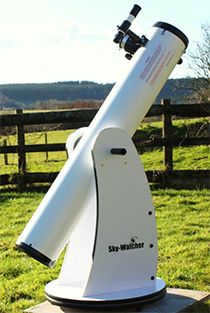
A comprehensive guide to telescopes
- Types of Telescopes
Optical configurations of telescopes
- Reflectors
- Refractors
- Mirror-lens telescopes (catadioptrics)
Telescope mounts
- Mounting Systems
- Azimuthal Mounts
- Equatorial Mounts
- Dobsonian Mounts
- Telescope Computerization
Key features of telescopes
- Aperture (lens diameter)
- Focal Length
- Magnification (multiplicity)
- Stellar Limit
- Angular Resolution
- Relative Aperture
- Light Type
- Telescope Dimensions
Telescope components
- Eyepiece
- Lens
- Finder
- Focuser
- Camera Mount
- Filters
- Optical system distortions
- Thermal stabilization for telescopes
- Telescope adjustment techniques
A telescope is an optical device that allows observers to view objects in a small region of distant space by bringing them closer. It collects light at a single point, known as the focus, and magnifies the image using lenses or a combination of lenses and mirrors. Telescopes can be categorized into refractors, reflectors, and catadioptric telescopes based on their optical systems.
Optical designs of telescopes
A reflector is a type of telescope that utilizes a large concave mirror as its objective lens, effectively gathering light from celestial objects in the night sky. This design completely eliminates chromatic aberration, allowing for observation of a wide range of astronomical objects. The benefits of reflector telescopes over refractor telescopes include shorter overall length and larger lens diameters at a similar cost.
A refractor is a type of telescope that utilizes a lens as its objective. These telescopes are ideal for novice astronomers as they allow for the observation of both terrestrial and astronomical objects. Some models even offer the capability for astrophotography. While refractors are susceptible to chromatic aberration, their enclosed tube, securely fixed lenses, and lack of the need to adjust the optical system can save time for the owner.
Mirror-lens telescopes, also known as catadioptrics, incorporate a special spherical mirror in their design, with a lens used to correct certain image defects.
There are two main types of telescopes: Maksutov-Cassegrain and Schmidt-Cassegrain telescopes. From the perspective of the observer, the images obtained from these telescopes are virtually indistinguishable.
Types of Telescope Mounts
A telescope mount is a device that enables the rotation of a telescope in the desired direction for observation. There are two main types of mounts: equatorial and azimuthal mounts. One specific type of azimuthal mount is the Dobson mount. An azimuthal mount allows the telescope tube to freely move in both elevation (up and down) and azimuth (along the horizon). An example of an azimuth mount is a regular photographic tripod. There have been several generations of azimuth mounts, including AZ1 and AZ2.
An equatorial mount is a type of mount where one of its axes is parallel to the Earth’s axis. It is designed to easily track celestial bodies, making it especially useful for astronomical photography. There are different generations of equatorial mounts, such as EQ1, EQ2, and EQ3. These mounts vary in terms of adjustment difficulty and accuracy for observation.
The Dobsonian mount, on the other hand, allows for smooth movement of the telescope tube in both elevation and azimuth (along the horizon). Dobsonian mounts are known for their stability, simplicity, and quick setup.
Telescope computerization is another modern feature found in many telescopes. This involves implementing various technologies such as computer control and computerized pointing at objects (computerized mount). However, telescopes with such features tend to be relatively expensive.
Main features of telescopes
| The size of the light-gathering lens or main mirror in telescopes (refractors, catadioptrics, and reflectors). A larger aperture allows more light to be collected, resulting in better visibility of object details, higher useful magnification, and improved display of faint objects. Aperture is measured in inches or millimeters. | 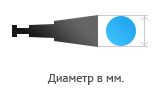 |
The distance between the objective lens and the point where the refracted (in a refractor) or reflected (in a reflector and catadioptric) rays converge. The focal length of the telescope, combined with the focal length of the eyepiece, determines the overall magnification of the telescope.
There are two types of telescopes: short-focus telescopes and long-focus telescopes.
A short-focus telescope, which has a focal length of up to 7, provides a wider field of view compared to a long-focus telescope. However, achieving high magnification with a short-focus telescope is more challenging.
In other words, the magnification of a telescope refers to how much it can enlarge the observed object. Amateur telescopes typically offer popular magnifications ranging from 50x to 150x.
To calculate the magnification, you need to divide the focal length of the telescope by the focal length of the eyepiece.
When it comes to observing the depths of space, small magnifications are utilized, while larger magnifications are suitable for brighter objects such as the Moon and planets. To determine the maximum useful magnification of a telescope, which provides an image of acceptable quality, simply multiply its aperture by two. Likewise, the minimum useful magnification can be found by multiplying the aperture by 0.15. Within this range, observations will be as comfortable as possible for the observer, with no distortion or loss of quality.
Particularly when observing the Moon and planets, it is crucial to increase the magnification. However, when observing deep space, the aperture of the telescope carries more significance than the magnification.
Components of a telescope
The eyepiece is located on the side of the telescope tube, facing the observer, and contains a lens called the “eye”. It is responsible for determining the objects that can be seen through the telescope. Certain objects, such as planets and the Moon, are best observed at high magnification, while galaxies, nebulae, and clusters are better viewed at low or medium magnification. The level of magnification is influenced by the focal length of the eyepiece, with a smaller focal length resulting in greater magnification of the telescope.
The lens is the part of the telescope tube that faces the object. Its primary purpose is to gather light. In lenticular telescopes, the lens contains a lens, while in mirror and lenticular-mirror telescopes, it contains a mirror. The size of the lens (aperture) determines the amount of light collected, which in turn affects the quality and level of detail in the observed image.
A seeker is a small telescope attached to the telescope tube. It has low magnification but a wide field of view, making it useful for locating the object of interest before observing it in greater detail.
The focuser is the component of the telescope that allows for the attachment of eyepieces and enables focusing, or sharpening, of the image. To determine if a specific eyepiece is compatible with your telescope, you can compare the eyepiece mounting diameters, which are usually measured in inches. The most common sizes are 1.25 and 2 inches. A 1.25 eyepiece can be fitted onto a 1.25 focuser, while a 2-inch focuser can accommodate both 2-inch and 1.25-inch eyepieces, although a special adapter may be required. Using larger eyepieces will provide a wider field of view for the same focal length.
Many modern telescopes are designed to be used with cameras. To attach a camera to your telescope for photography purposes, you will need various adapters and accessories, such as a T-adapter and a T-ring.
Nozzles on the eyepiece of the telescope, which enable obtaining a clearer and superior image of the areas of interest to the observer, by eliminating unnecessary “backlighting” and blurriness of the boundaries. The size of the filter should correspond to the telescope’s eyepiece. All filters are categorized into deep-scale filters (for deep space objects) and solar, lunar, and colored planetary filters (for nearby objects).
Solar filters diminish the intensity of the Sun’s light by several thousand times, balancing brightness and light distribution, allowing the observation of spots and flares on the surface. Viewing the Sun through a telescope without solar filters can result in rapid and irreversible vision loss. A solar filter is the only one that is placed on the telescope’s lens, not the eyepiece.
Lunar filters are used to block the intense moonlight and enhance the visibility of details on the Moon, even in low-contrast conditions.
Planetary filters in various colors are helpful in observing the surface features of different planets. The green filters are specifically designed for Mars, Saturn’s polar regions, and Jupiter’s Great Red Spot. Red filters are ideal for viewing Mercury and other planets during daylight, as well as the Martian seas and enhancing the contrast on the Moon. Orange filters are recommended for observing Jupiter, Saturn, and sunset observations. Yellow filters can improve the visibility of Saturn, while violet filters are suitable for observing Venus.
Dipscope filters are specifically designed to observe faintly luminous objects that are barely visible in the sky without the use of filters. Different filters are available for different types of nebulae, as well as for observing galaxies and comets.
Advantages of using a telescope
Imperfections in the observed image, which may arise from a discrepancy between the telescope’s temperature and the environmental temperature (see Thermal Stabilization), unique characteristics of the telescope’s optical design, or an attempt to use the telescope in inappropriate conditions.
In the case of a refractor, the presence of a colored halo around bright objects can be mitigated by adding an extra lens.
If a short-focus reflector produces elongated objects resembling comets or pears at the edges of the field of view, this issue can be rectified by using a coma corrector, which can be installed in the telescope’s focuser.
If the telescope is exposed to cold temperatures, the image may become unstable due to air currents (since the telescope will be warmer than the surrounding air). Additionally, if the telescope is colder than its environment, condensation may form on its surface.
Alignment is necessary to achieve the best quality image when using the telescope. This is especially important for reflector telescopes. Technically, alignment involves adjusting the angle of inclination of the working elements of the telescope, such as the mirror. More specific instructions for alignment can usually be found in the user’s manual, and they may vary depending on the model.
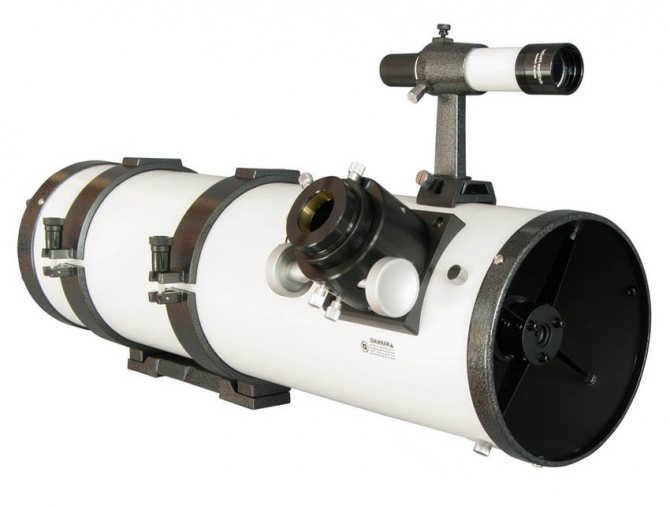
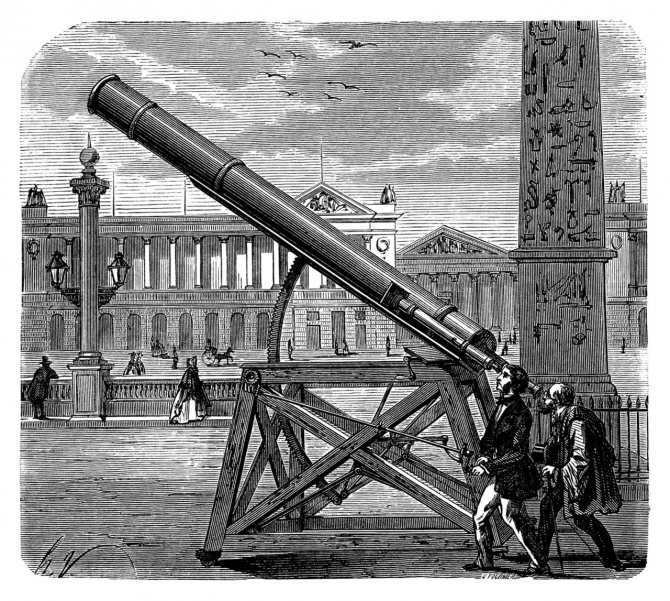


The design of the Newtonian reflector is classified as a mirror telescope, meaning that a concave mirror serves as the lens. This design offers several advantages when compared to another type of telescope, the refractor, which uses a lens:
- Creating a mirror is much simpler than creating a lens, especially since a high-quality refractive lens requires multiple high-quality lenses. A mirror only requires one.
- The glass requirements for the mirror are not as stringent – it just needs to be able to withstand the weight and temperature changes. The lens, on the other hand, needs to be made of high-quality optical glass with no defects. The transparency and thickness of the glass are not important for the mirror.
- When comparing reflectors and refractors with the same diameter, the Newton reflector is much more compact. For example, a refractor with a 150 mm objective would be over 2 meters long and very expensive, not to mention the astronomical cost of the objective and mount. A reflector of the same size is only half as long, much smaller, and the mirror is more affordable.
- A mirror telescope provides superior image quality compared to a refractor due to the absence of light refraction and the presence of only reflection. As a result, the mirror telescope is virtually free from various aberrations, such as chromatic aberration, which causes colored fringes around objects, and delivers sharper and higher quality images.
- Additionally, the mirror telescope is capable of reflecting light across a wide range of wavelengths, including ultraviolet, making it crucial for observation and photography. On the other hand, a refractor allows light to pass through a lens, leading to significant loss of most of the spectrum, including ultraviolet.
- Furthermore, a mirror telescope boasts a larger aperture, which enables the capture of clearer and superior photographs.
- Thanks to its unique design, the Newton refractor boasts a side-located eyepiece that allows for incredibly convenient observations. While the refractor can be equipped with a wraparound prism, this feature is ultimately unnecessary as it obstructs the path of light, leading to increased losses. It’s important to note that convenience is a relative concept, and the side-located eyepiece already provides exceptional ease of use.
- Structurally, the telescope is comprised of a primary mirror with a spherical or parabolic shape, as well as a secondary flat mirror. The primary mirror is responsible for focusing the light, while the secondary mirror simply directs the focused beam out of the tube, where the eyepiece for observation is conveniently located.
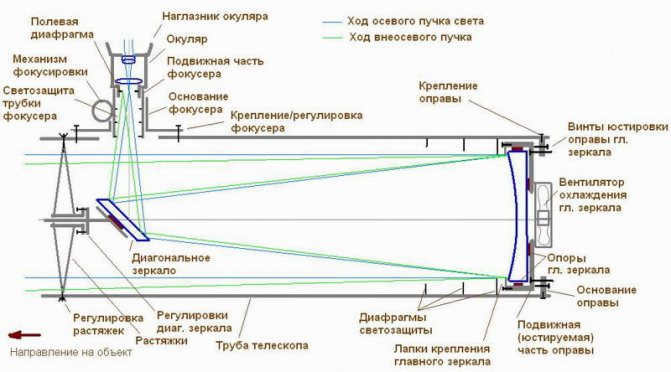
The primary mirror is positioned on a specialized platform equipped with alignment screws, allowing for precise adjustment of its tilt. The secondary mirror, on the other hand, is situated on stretchers near the front end of the tube. As a result, the telescope only involves two reflections.
Moreover, the eyepiece is equipped with a focuser that enables smooth and accurate adjustment of sharpness.
Compared to refractors with a similar objective diameter, the Newton Reflector telescope is relatively inexpensive. In fact, the price difference between the two can be several times, and in the case of larger models, there may not even be any comparable alternatives. For instance, refractors with a lens diameter of 50-80 mm can be considered popular, but once the diameter reaches 90 mm, the price becomes significantly higher.
Simultaneously, the Newtonian refractor, boasting a mirror diameter of 110 – 150 mm, is remarkably accessible to virtually every stargazing enthusiast. Countless hobbyists possess 200-mm models, which are regarded as professional-grade. Refractors of this size can exclusively be encountered at observatories and are not available for purchase.
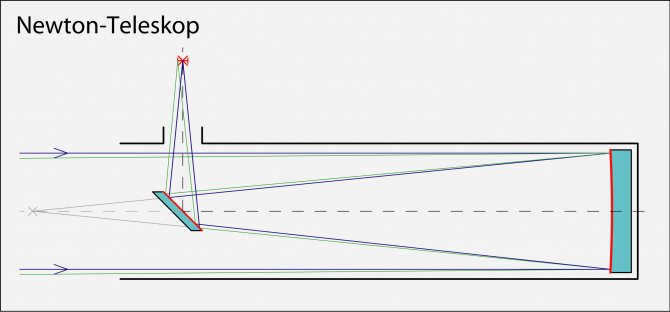
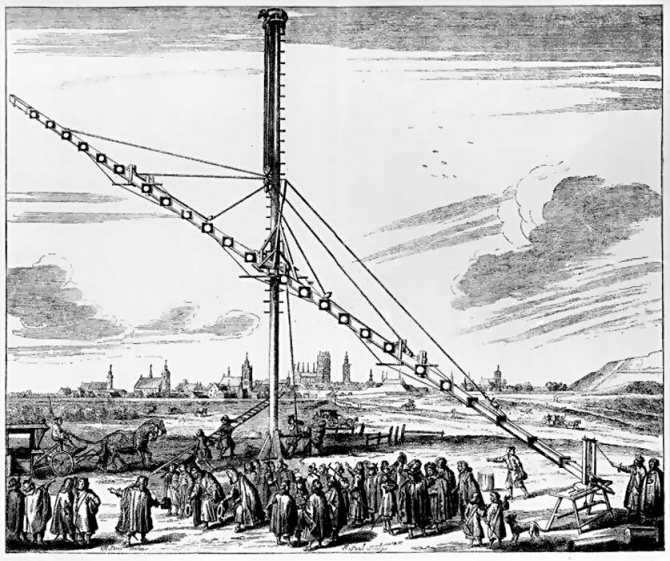
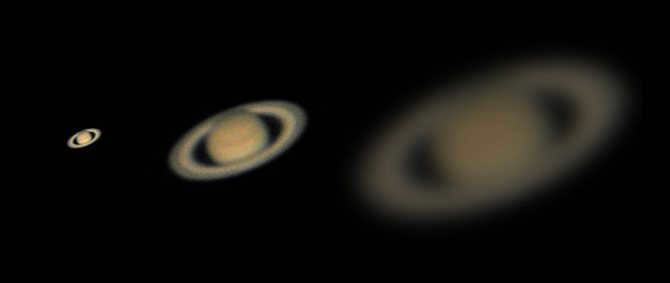
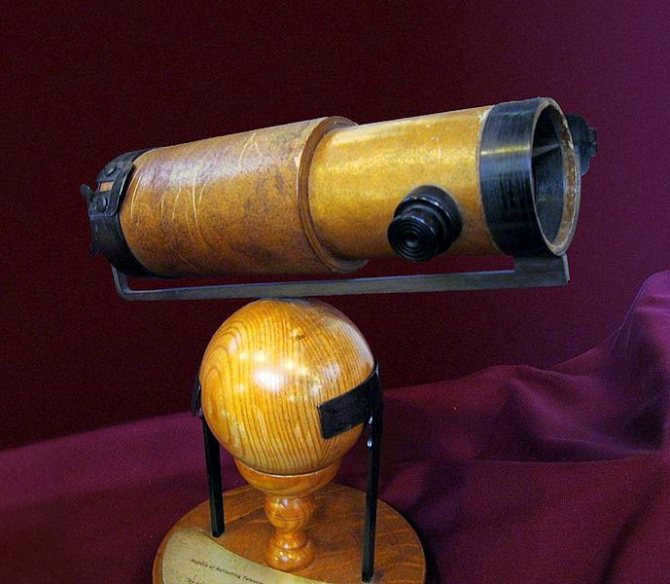
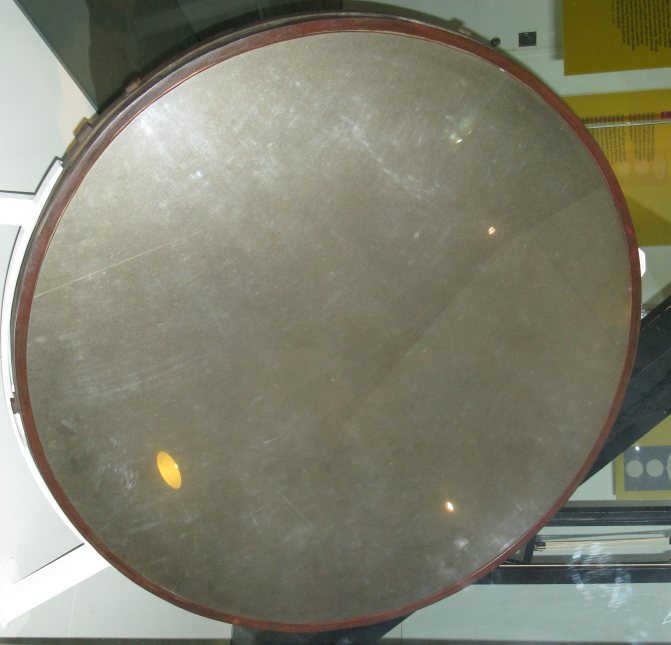
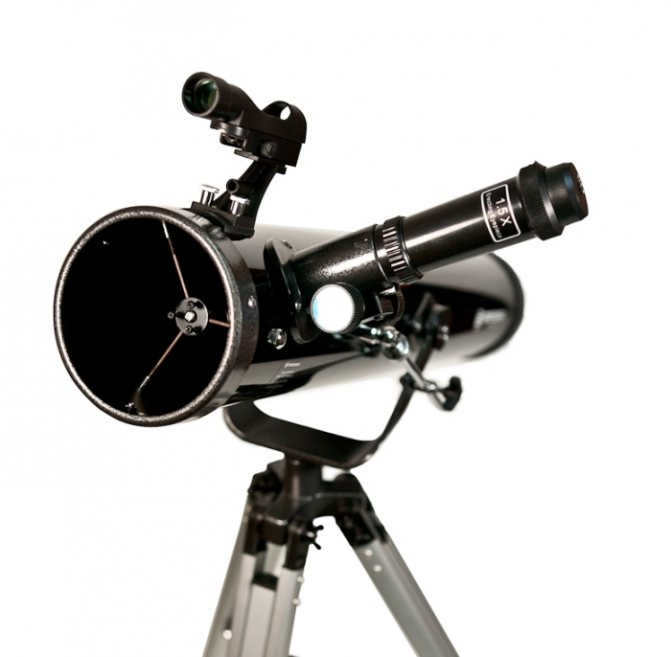
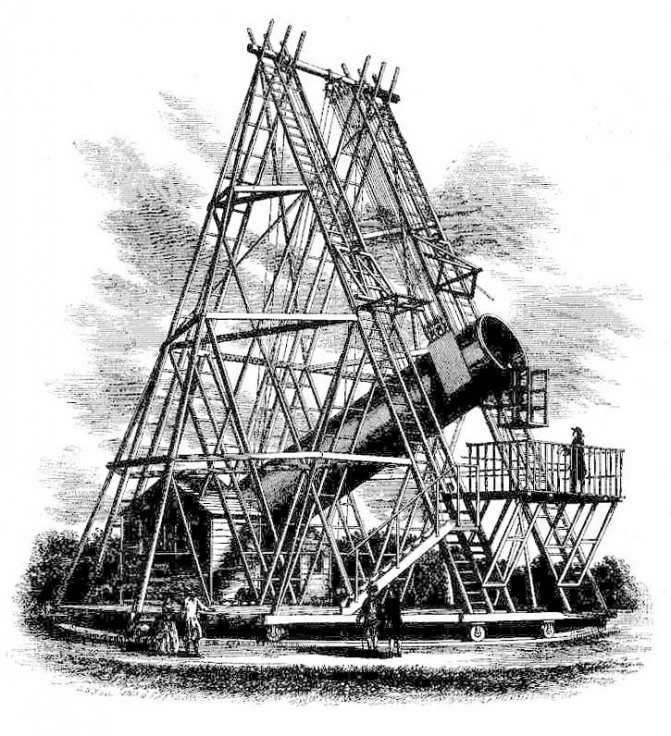
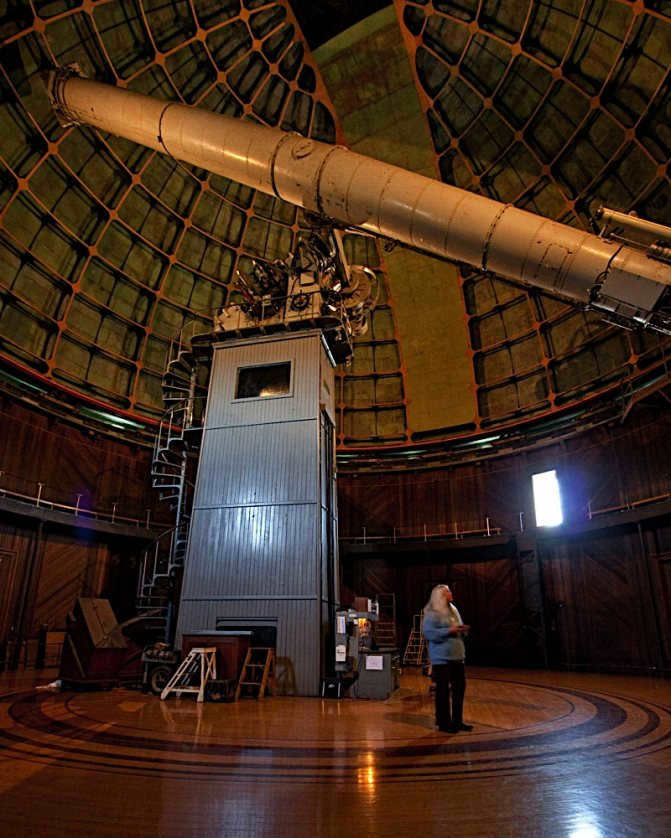
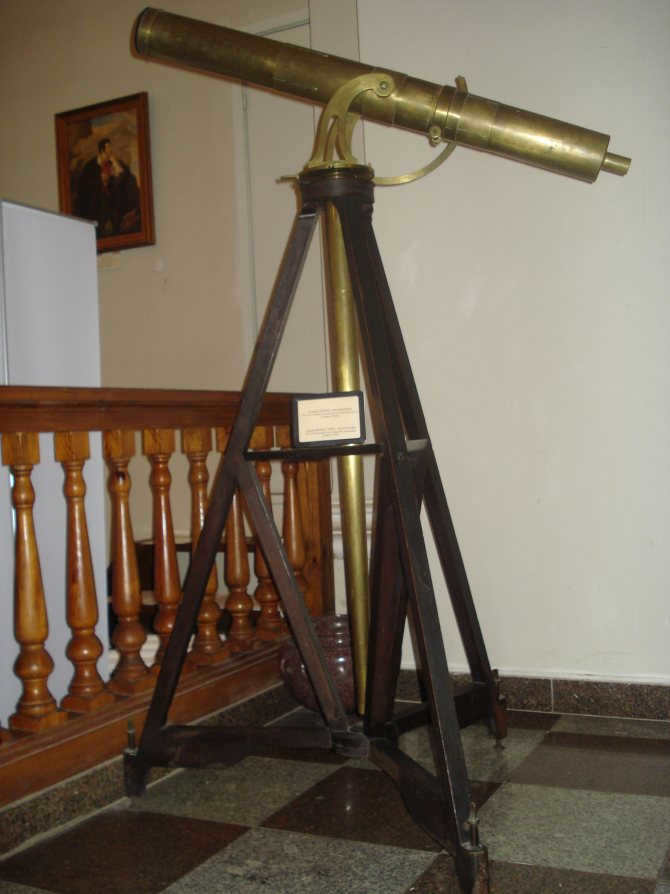
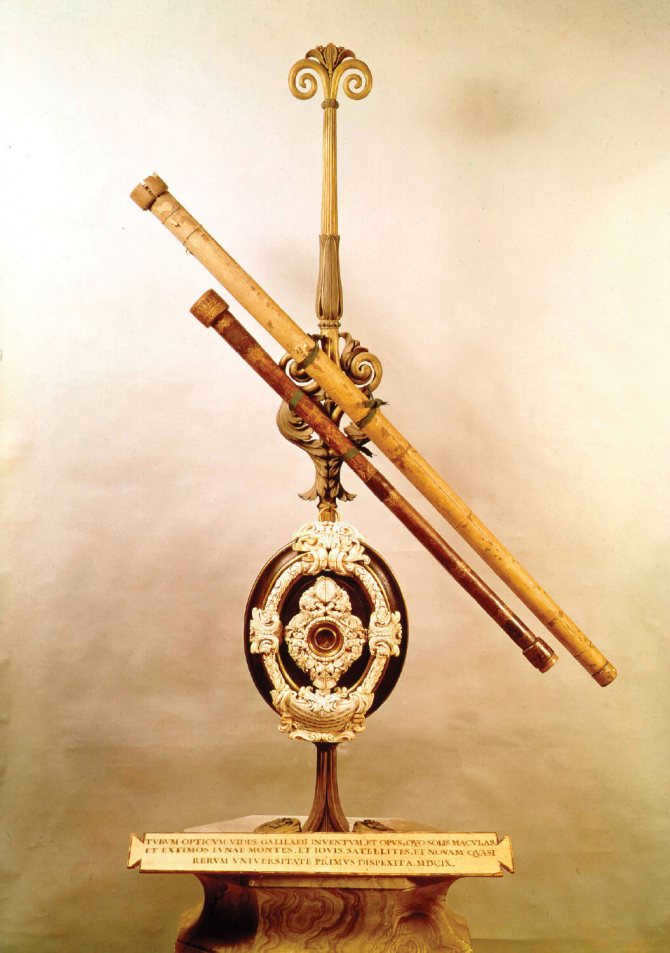

What is the structure of a telescope? There are several primary categories of telescopes:
- Refractors. Refractors utilize only lenses in their design. They function by refracting light rays;
- Reflectors. These telescopes are made up entirely of mirrors, with a configuration that includes a main mirror and a secondary mirror;
- Catadioptrics or hybrid type. These telescopes incorporate both lenses and mirrors.
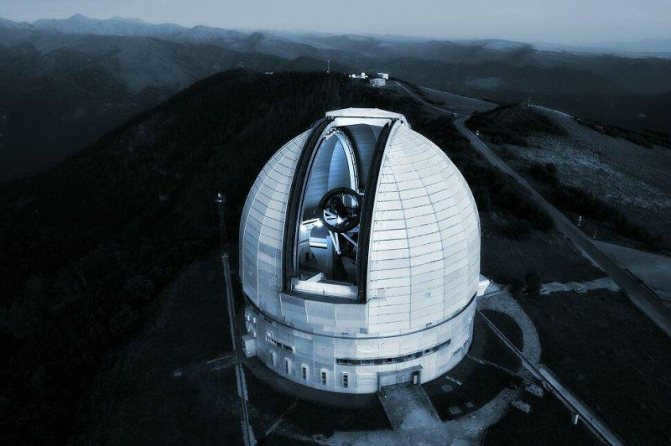
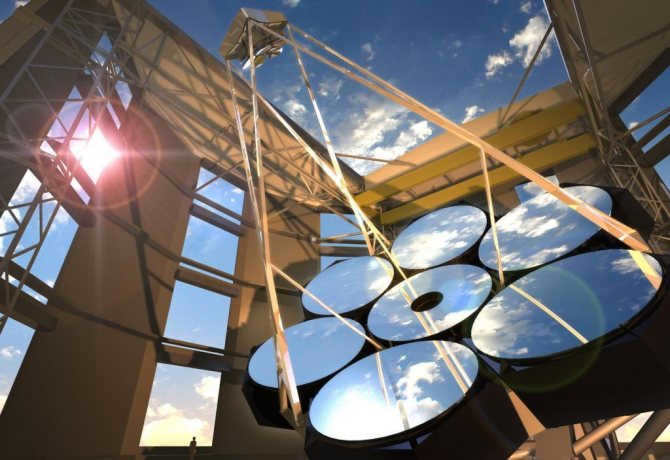
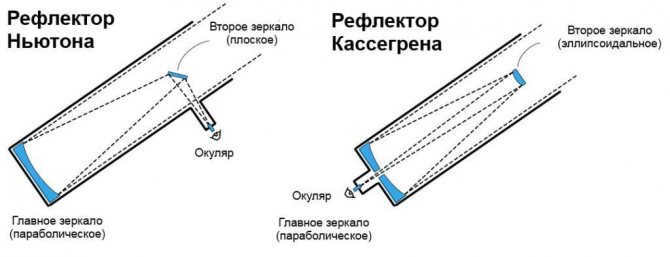
Originally developed by renowned English scientist Isaac Newton, this particular telescope design draws its name from its creator. Newton, famous for his contributions to mathematics, physics, astronomy, and various other scientific disciplines, brought this concept to life. However, it is important to note that the idea for this design actually originated from Scottish scientist and mathematician James Gregory. In 1663, Gregory proposed the concept, but it was Newton who transformed it into a functioning telescope.
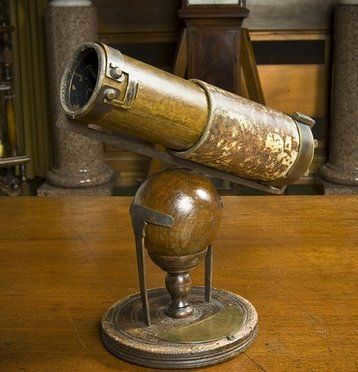
Newton invented the first telescope based on this design in 1668, but it proved to be unsuccessful. The second model, however, was an improvement and provided a superb image with 40x magnification.
This was a significant advancement in astronomy, particularly considering that refracting telescopes – primitive, lens-based telescopes, or even telescopes within telescopes – were being used at the time. These instruments, of course, did not produce high-quality images and had limited magnification, although they did contribute to many discoveries.
Nevertheless, in 1671-1672, Newton presented his telescope to the king himself and the Royal Society, which garnered much admiration. Newton gained fame and was elected a Fellow of the Royal Society. Subsequently, the reflector telescope became the primary astronomical instrument, enabling numerous important discoveries.
The contemporary version of Newton’s reflector
Since that time, not much has altered, although numerous other telescope designs have emerged, such as reflectors. Nevertheless, the Newton reflector, known for being the most simple yet effective instrument, continues to be adored by amateur astronomers worldwide, with many individuals constructing their first Newton reflector with their own hands.
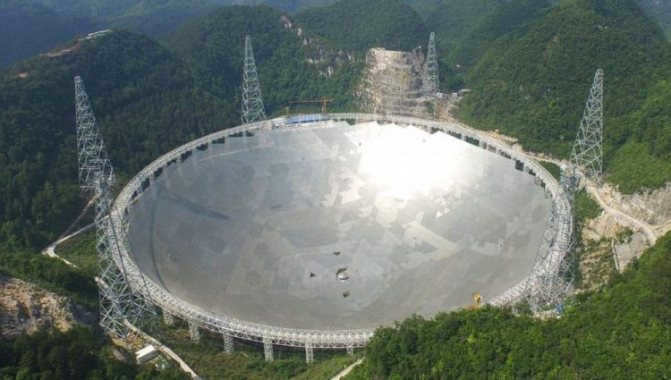
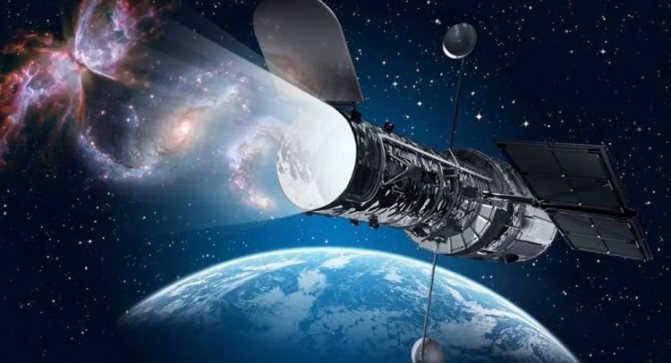
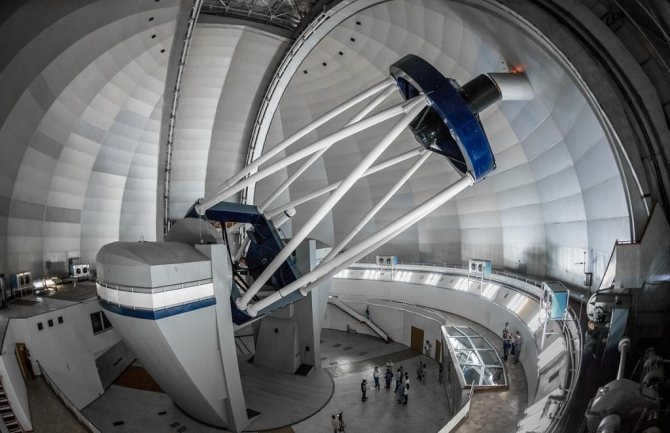
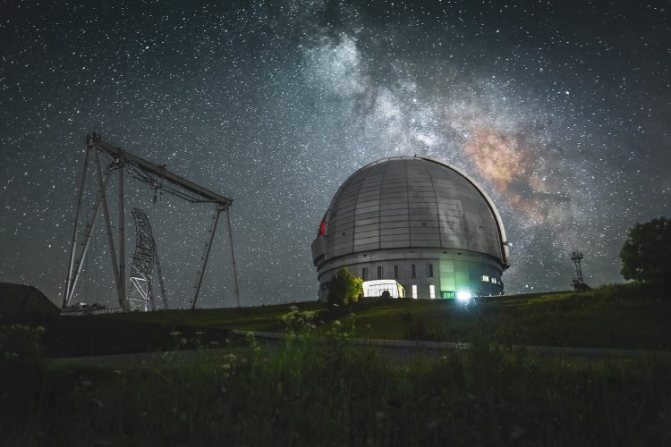
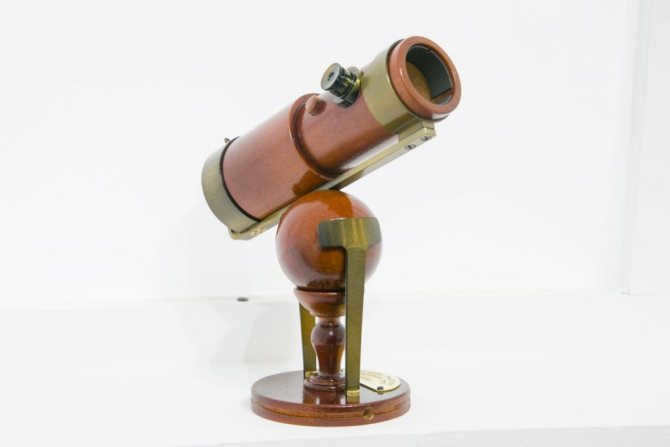
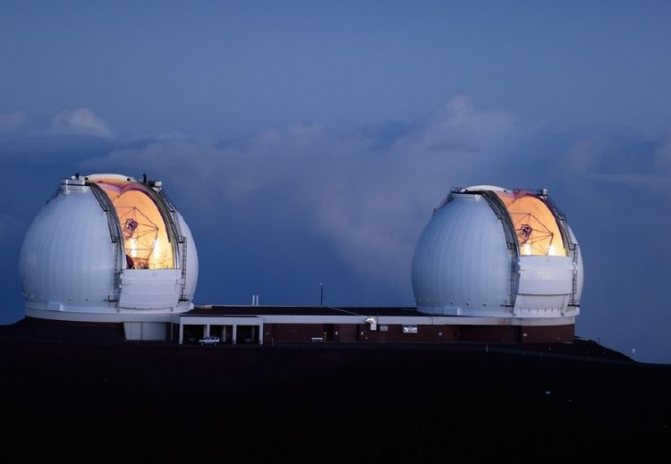
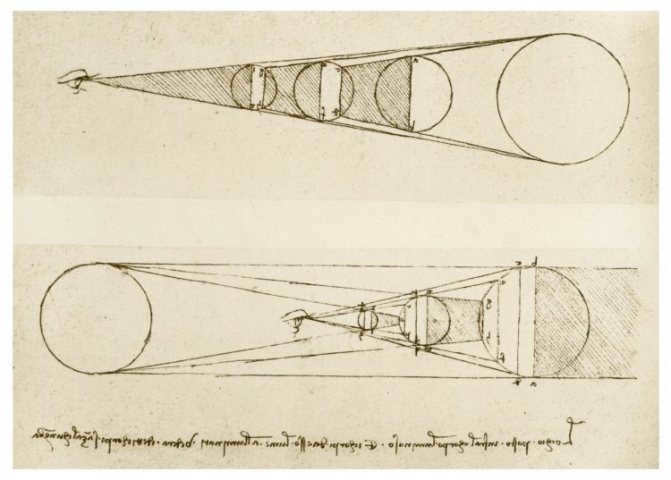
Adaptive optics technology was developed in the 1970s to correct for image distortions caused by the Earth’s atmosphere in real-time[9]. Since the 2000s, adaptive optics systems have been widely used on large telescopes, enabling them to achieve the maximum angular resolution determined by diffraction[9]. The implementation of adaptive optics on the Subaru telescope resulted in a tenfold increase in angular resolution[10].
- Laser guiding star system. By projecting a laser beam into the sky, an artificial star is created in the sodium layer of the Earth’s atmosphere at an altitude of approximately 90 kilometers. This artificial star’s light is utilized to adjust a specialized mirror, which reduces flickering and enhances image quality.
Which objects are best observed with a Newtonian reflector?
The Newtonian reflector telescope is suitable for observing a wide range of objects, although it may not be the most convenient for terrestrial observations due to the inverted image it produces. However, this inversion is not important for astronomical purposes.
Thanks to its larger mirror diameter compared to refractor telescopes and minimal light loss, the Newtonian reflector is particularly well-suited for observing faint objects such as nebulae, galaxies, and planets. Additionally, its design makes it more effective for astrophotography.
Mechanics
Installation
Main article: Telescope mount
The telescope mount is a pivotal support system that enables the telescope to be directed towards the desired object and, for extended observations or photography, compensate for the Earth’s diurnal rotation. It consists of two perpendicular axes which are used to point the telescope towards the object of interest. The mount may also include actuators and rotation angle reference systems. The mount can be fixed onto various bases such as a column, tripod, or foundation. Its primary function is to ensure that the telescope tube reaches the desired position and the object being observed can be smoothly tracked.
The main factors that affect the accuracy of solving this problem are as follows[11]:
- Complexity of the atmospheric refraction variation law
- Differential refraction
- Manufacturing the actuator with technological accuracy
- Precision of the bearings
- Mount deformation
Equatorial mount and its different types
An equatorial mount is a type of mount that has one of its rotation axes pointing towards the Earth’s pole. Consequently, the plane perpendicular to it is parallel to the equator. It is a traditional mount used for telescopes.
On one end of the polar axis, the body of the declination axis is attached. This mount is asymmetrical and requires a counterweight.
The polar axis is supported at both ends, and in the middle of the polar axis, there is the declination axis bearing. The English mount can be both asymmetrical and symmetrical.
One end of the polar axis terminates in a fork that carries the declination axis.
Pros and cons
One of the main benefits of using the mount is its simple star tracking mechanism. However, as the weight of the telescope increases, several difficulties arise, including:
- Varying deformations of the mount based on the telescope’s position.
- Changes in load on the bearings when the telescope’s position changes.
- Challenges with synchronizing the mount with the dome.
Alt-azimuth mount
An alt-azimuth mount is a type of mount that enables the telescope to be rotated in both vertical and horizontal axes of rotation, allowing it to be directed to any desired point on the celestial sphere.
How to build your own Newtonian reflector telescope
Nowadays, it is possible to easily purchase a Newtonian reflector telescope from a store, offering a wide range of configurations at relatively affordable prices. This allows you to observe various celestial objects in space.
Nevertheless, by having the determination and dedication, one can construct a Newtonian reflector by themselves. It is undoubtedly a laborious task, but the end result is a relatively powerful telescope that can cost tens or even hundreds of thousands of rubles if purchased from a store. As an example, experienced amateurs have successfully crafted 200 and 250-mm telescopes for their own home observatories.
Why would you want it now, when everything can be purchased in a store? The motives can vary – from simple cost savings to purely practical curiosity. After all, a telescope built by your own hands, according to your own specifications, can be just as good as a store-bought one, and the skills acquired in the process will definitely be useful.
The Observations of Stars in the 17th Century
The 17th century marked a significant period in the history of observing stars. Thanks to advancements in technology and the progress of science, astronomers were able to create more powerful telescopes that revealed a wealth of new information. To achieve this, they began using lenses with longer focal lengths and constructing larger telescopes that were cumbersome to handle.
One notable astronomer of the time was Jan Hevelius, who built his first observatory in 1641. Hevelius recognized a major drawback of refractor telescopes at that time – chromatic aberration. To overcome this issue, he constructed telescopes of enormous size, with the largest reaching a staggering length of 45 meters.
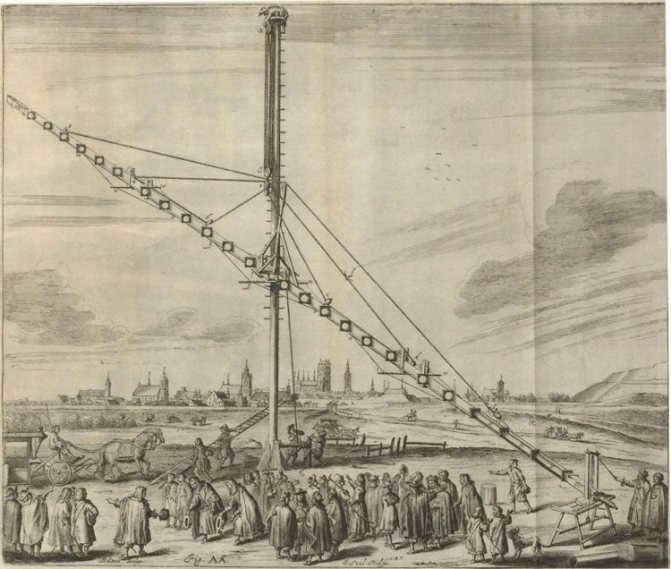
An “air telescope” was developed that did not have a traditional tube and instead had a lens and eyepiece connected without any rigid connection. To suspend the telescope, a system of ropes and blocks was used, with retired sailors who were experienced in rigging maintenance operating the telescopes.
Over time, these telescopes were improved and refined. However, due to limitations in lens production, the maximum diameter of the telescopes did not exceed a few centimeters. It wasn’t until 1656 that Christian Huyens created a telescope with a magnification of 100 times, measuring over 7 meters in size and having an aperture of about 150 mm.
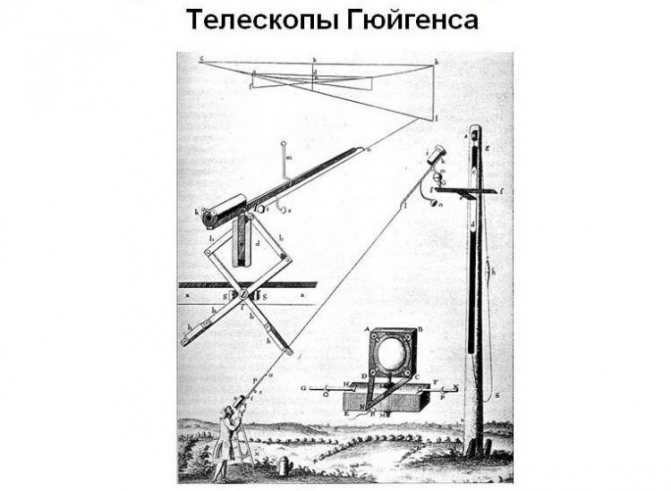
This telescope is already considered to be on par with today’s beginner-level amateur telescopes. By the 1670s, a 45-meter telescope had already been constructed, which further increased magnification and provided a wider field of view.
Where to purchase a Newtonian reflector
Acquiring a Newtonian reflector is now a simple task. This design is highly popular and is manufactured in various forms by nearly all telescope manufacturers. Optical stores in cities typically have a wide selection of these models in stock.
You can also purchase a Newtonian reflector online. Models of this design are available in nearly every size and from various manufacturers. Selecting the right model based on its specifications or price is effortless, and you can place an order directly on the website.


There are two primary categories of optical telescopes – refractors, also known as lens telescopes, and reflectors, also known as mirror telescopes. Refractors use glass lenses as the collecting lens for light rays, while reflectors use a concave mirror as the lens.
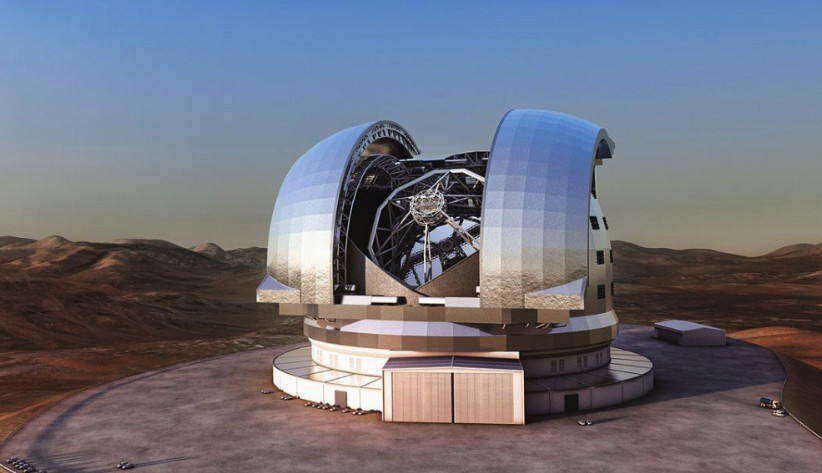
When visiting an astronomical observatory, many people are curious about the magnification of a large telescope. They are often surprised to learn that the main purpose of telescopes is not to achieve high magnification, but rather to collect as much light energy as possible from celestial bodies.
Parallel rays of light from celestial bodies reach the Earth, but only a tiny fraction of this light enters the human eye due to the small diameter of the pupil (usually around 6-7 mm). However, a telescope with a larger lens can capture a larger amount of light and concentrate it, allowing us to see faint celestial objects that are not visible to the naked eye.
Given that refractor telescopes are predominantly used by secondary school students for observing celestial objects, we aim to provide a comprehensive description of these telescopes in order to enable observers to ascertain the key features and capabilities of their own telescopes.
Every optical lens possesses certain drawbacks. In order to mitigate these drawbacks to a considerable extent, the lens of a refractor telescope consists of two lenses (occasionally three), each with a small curvature. One of these lenses is double-convex, while the other is flat-concave, thereby rectifying the optical imperfections of the initial lens.
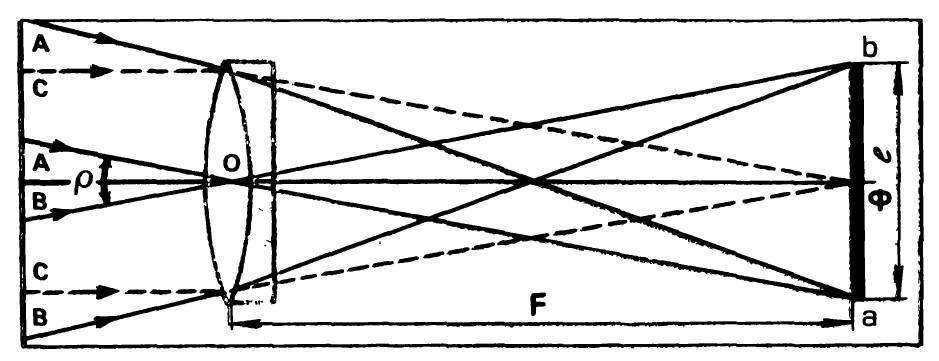

The optical axis of the lens (telescope) is defined as a straight line (OF) that passes through the center of the lens and is perpendicular to the lens surfaces. When light rays (C) approach the lens parallel to the optical axis, they undergo refraction and converge at a point called the focus (F) of the lens. This point is located on the optical axis and is situated at a specific distance from the center of the lens known as the focal length of the lens (F = OF) or telescope.
When parallel rays (A, B) pass through a lens at an angle to its optical axis, they are refracted and converge at points (a, b) in the focal plane. These points are located in the focal plane, which is perpendicular to the optical axis and passes through the focal point. As a result, the images (ab) of extended objects (AB) with significant angular dimensions (p) are obtained inverted and can be found in the focal plane of the telescope.
Therefore, one of the key characteristics of a telescope is its focal length (F) of the lens. The focal length determines the linear dimensions of the images of celestial objects (such as the Sun, Moon, planets, nebulae, etc.) in the focal plane of the telescope.
Another important characteristic of a telescope is the diameter (D) of its objective lens. The amount of light collected by the lens is proportional to the square of its diameter, making the diameter a crucial factor in the telescope’s performance.
The relative aperture of a telescope, which is often mistakenly referred to as aperture, plays a significant role and is its third distinguishing feature:
When we visually observe a luminary, we use the eyepiece (derived from Latin words “ocularis” meaning “eye” and “oculus” meaning “eye”) which consists of two small short-focus lenses. This allows us to magnify the extended luminary. The magnification of the telescope is calculated using the formula W=F/f where F represents the focal length of the objective lens and f represents the focal length of the eyepiece.
Every telescope is equipped with multiple eyepieces for observing objects at various magnifications, which need to be chosen based on the conditions. Dimly lit objects like comets, nebulae, and star clusters should be viewed at the lowest magnification to enhance their brightness. Planets and the Moon can be observed at the maximum magnification permitted by the atmospheric conditions. Nevertheless, there are instances when the Earth’s atmosphere is turbulent or overly humid, in which case planets and the Moon are better viewed at lower magnifications.
However, even in the most ideal weather conditions, it is not possible to achieve an unlimited level of magnification from a telescope using eyepieces with extremely short focal lengths. This is because the lenses’ optical flaws would start to have a negative impact. As a result, each telescope has a maximum allowable magnification, denoted as Wm=2D, where the lens diameter D is measured in millimeters but is considered a dimensionless quantity.
The resolution, or resolving power, of a telescope is determined by its lens diameter. This refers to the smallest angular distance that can be clearly distinguished in the telescope, including the ability to separately observe two stars that are very close to each other in the sky (known as close pairs of stars). The telescope’s resolution is represented by the Greek letter Θ (theta).
The luminosity of celestial luminaries is measured in stellar magnitudes, with lower luminosity stars having greater stellar magnitudes (m). Under optimal conditions, such as a dark, clear night, the naked eye can see stars up to 6 m. Telescopes allow astronomers to observe even fainter stars with higher stellar magnitudes. Therefore, it is important for astronomers to be aware of the minimum brightness of stars that can be observed with their specific telescopes under ideal conditions.
It is important to note that it is impossible to directly observe the Sun through a telescope without eye protection, as the concentrated solar light will quickly damage the eyes. When observing the Sun, it is essential to use a dark light filter (such as dark glass) in front of the lens. However, the safest and most effective method is to observe the Sun on a white screen positioned behind the eyepiece; in this case, a light filter is not required.
To study faint celestial luminaries effectively, it is necessary to create lenticular lenses of large dimensions. However, the process of manufacturing large lenses is incredibly challenging, resulting in only a single refractor worldwide possessing a lens with a diameter of 102 cm (F = 1940 cm). The second largest lens, measuring 91 cm in diameter (F = 1730 cm), was also crafted by American optician A. Clark in 1886 and subsequently installed at the Yerkes and Lick Observatories in the United States. Despite numerous attempts, all efforts to produce lenticular lenses of similar size have proven unsuccessful. In the Soviet Union, the Main Astronomical Observatory of the Academy of Sciences boasts the largest refractor telescope, featuring a lens diameter of 65 cm and a focal length of F = 1040 cm.
Astrographs, which are refractors specifically designed for capturing images of celestial objects, are commonly used to photograph these objects in order to determine their apparent positions in the sky and study their motion. Unlike traditional telescopes, the camera is mounted in the eyepiece section of the telescope rather than the eyepiece itself. Additionally, there are double astrographs available that feature two separate lenses, enabling simultaneous photography with different exposure settings.
To study the physical nature of celestial bodies, it is preferable to use telescope-reflectors. These reflectors have a concave parabolic mirror with a small curvature, which is made of thick glass and coated with a thin layer of powdered aluminum. The aluminum is sprayed onto the glass under high pressure.
The mirror reflects light rays, which are then collected in its focal plane. In this focal plane, the images of objects are inverted. To bring the focal plane closer to the eyepiece, an additional small mirror is used. This mirror can be either flat (as proposed by Newton in 1671) or convex (as proposed by Kassegren in 1672). This additional mirror significantly lengthens the focal length of the mirror lens. The figure below shows the different schemes for the mirror lens (schemes “a” and “b”).
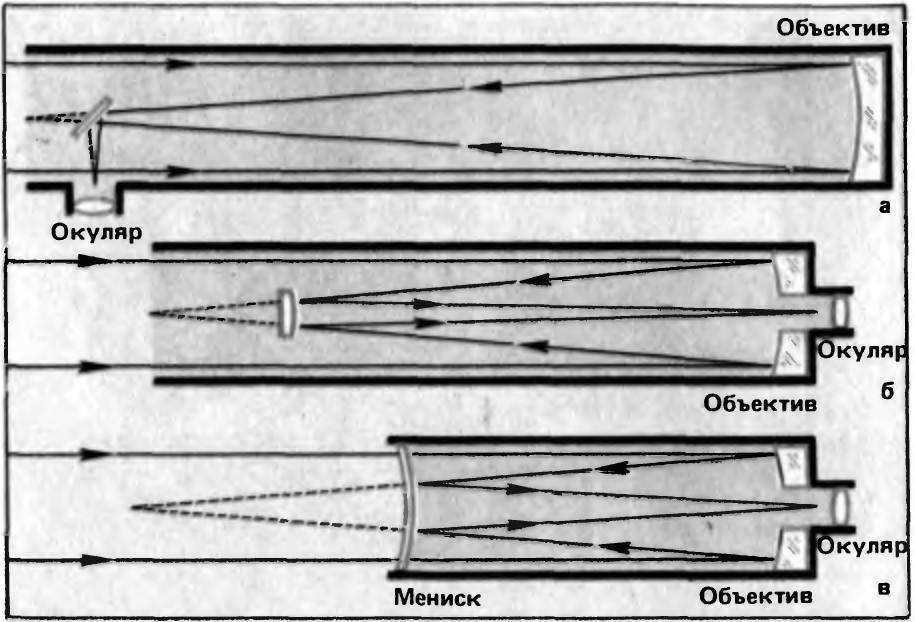
The meniscus telescope, also known as the Maksutov reflector, was created by Soviet optician D. D. Maksutov (1896-1964). This type of telescope features a spherical mirror lens, which is easier to produce, and any optical imperfections are corrected by a thin lens with a small curvature called a meniscus. The meniscus lens is positioned in front of the mirror lens (illustrated as “c” in the diagram). To serve as an additional mirror, a small aluminum spot is applied to the inner surface of the meniscus. Maksutov telescopes are available in various models, ranging from a school-type telescope with a lens diameter of 70 mm to larger instruments with diameters of up to 1 meter.
The production of massive mirror lenses also necessitates immense effort. Mirrors, unlike lenses, have virtually no light absorption, making them highly valuable for studying the physical properties of celestial objects. As a result, contemporary large telescopes are outfitted with mirror lenses ranging in diameter from 1.5 to 4 meters and with focal lengths of 9 to 12 meters.





